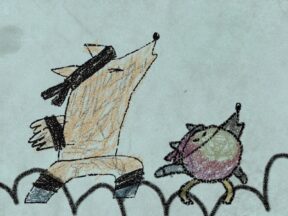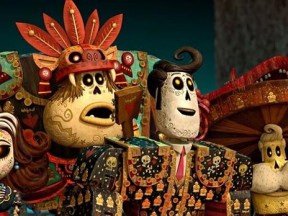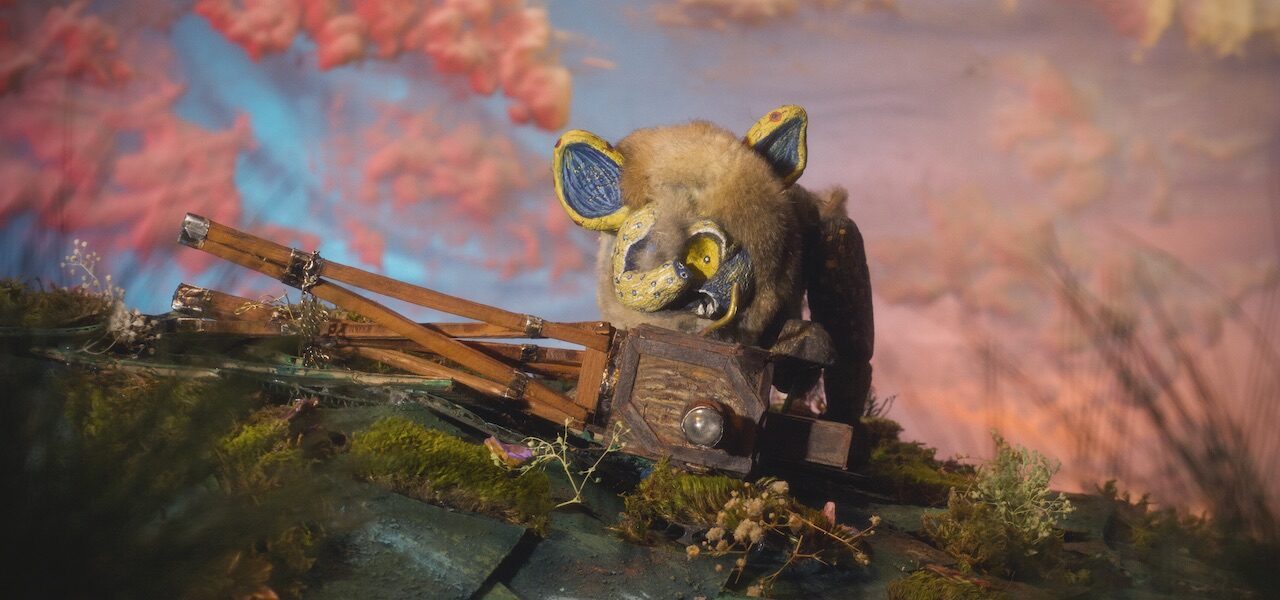

Revolution, Cubism, And A Love Letter To Cinema: ‘Revoltoso’ Is An Epic Stop-Motion Short From Mexico (Exclusive Online Premiere)
When Arturo “Vonno” Ambriz graduated from his film and television degree in Mexico City, he struggled to find a company that would back the sort of film he wanted to make. His solution was as simple as it was bold: he teamed up with his brother Roy to found their own studio, Cinema Fantasma.
From the start, Cinema Fantasma operated as a vehicle to produce Revoltoso (Rebellious), a colorful, ambitious 30-minute stop-motion short set in 1913, during the Mexican Revolution. An eccentric landowner pits his pack of semi-domesticated boars against a ragtag bunch of rebels, while a photographer hired by the landowner records events on a film camera. Revoltoso is premiering online exclusively on Cartoon Brew. Watch it below:
The Mexican Revolution was one of the first conflicts ever to be captured on film, and the camera assumes a totemic significance in Revoltoso, serving variously as a symbol of vanity, travel, imagination, and hope. The short ends up as a tribute to cinema itself, and its capacity to inspire peace — a potent message in today’s Mexico, which continues to see violence.
This is the sort of film the Ambriz brothers wanted to make. Never mind that they didn’t really have the money, or that they’d never done stop-motion animation before. They persevered, hiring friends and family and learning their craft, while generating funds through commercial side projects (including six promotional shorts for Cartoon Network Latin America). The project drew the attention of Guillermo del Toro and Jorge Gutierrez, who endorsed it, as well as stop-motion collective Screen Novelties, which contributed some animation.
Through the production, Cinema Fantasma crystallized as a studio. It now counts NFL Mexico and Adult Swim among its clients. Revoltoso took five years to produce; Vonno believes they could now make a feature film in two. Below, he tells Cartoon Brew why they chose the revolution as a subject, what it took to keep going, and how they caught the eyes of their famous sponsors. A short making-of featurette is included beneath.

Vonno Ambriz: We are brothers less than two years apart, so we have been working together for a long time. When [thinking about a subject for the film], we realized that it should be about the reason we chose to be artists: in order to do good. We deeply believe that art can heal and help spread compassion. When we see characters in film or literature, we understand more about people and their feelings and motives. Revoltoso is a piece that tries to explore the role of cinema in the midst of war and conflict as a metaphor for our contemporary life.
Most of us on the production team met in college. Most of the crew was comprised of friends and family, such as our parents Adriana and Rodolfo, who worked as producers, and my then-girlfriend (and now-wife) Irene Melis, who was the director of photography. Since we finished the film, many of us have been working together on other commercial and personal projects.
We spent five years working full-time on this film. We had no idea whatsoever of how to do stop-motion animation (or even animation at all), so we had to experiment a lot and learn from scratch. We learned watching the making-of documentaries about The Nightmare Before Christmas, Fantastic Mr. Fox, and King Kong. We would pause the video to take notes and sketches of their technical equipment and setups.
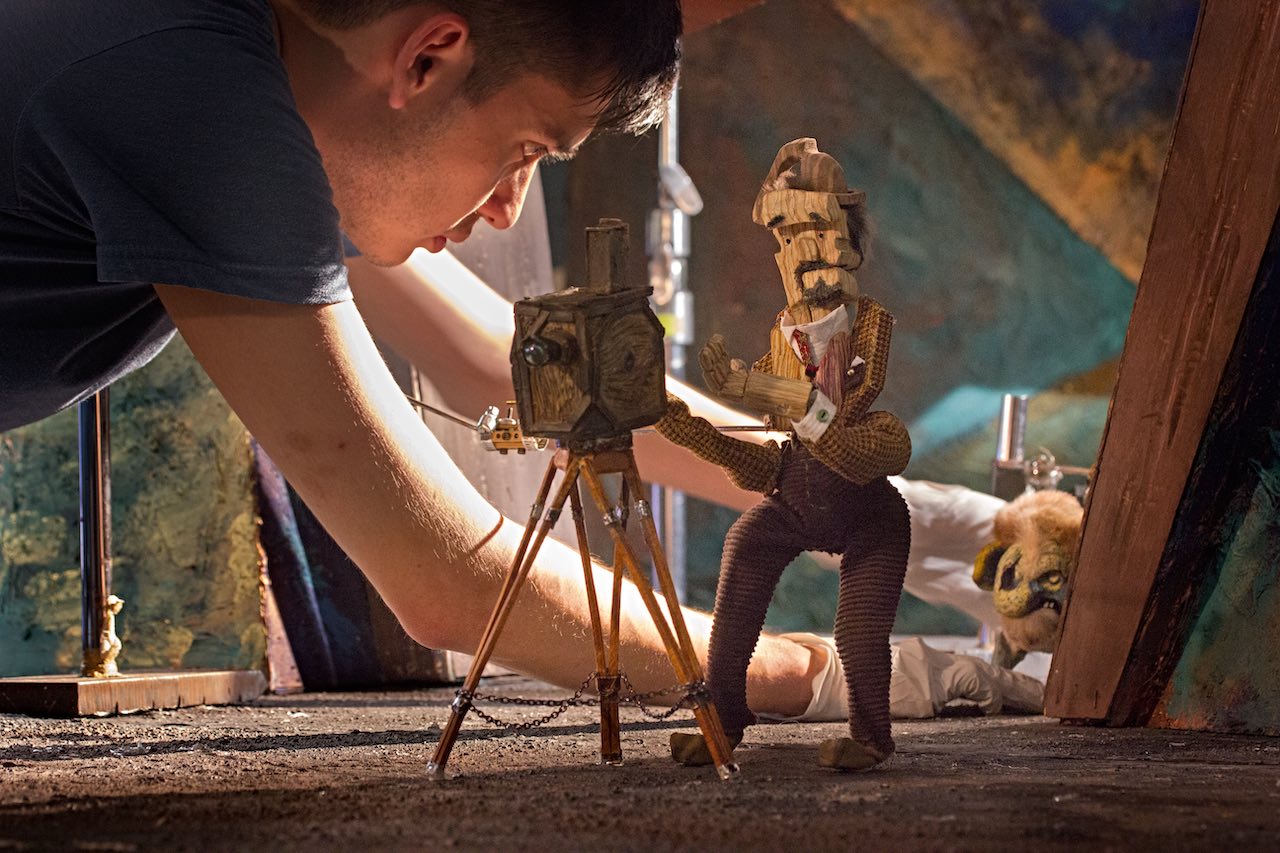
“Guillermo del Toro told us it would always be painful to make a film”
We worked more than two years on the puppets, sets, props, and storyboard. The photography and animation stage of production took around a year and a half. The rest was post-production and reshoots. A significant percentage of every week of those five years was spent on trying to acquire the budget needed to finish the film. We had the support of our parents, friends, and family. We had an amazing executive producer called Alejandro Ibarrola, and other associate producers who contributed.
The production designer was Roy. While we were exploring how to approach the film’s aesthetic, we went to a Cubist exhibition. It had a huge section called “Cinema and Cubism” which explored how the Cubist artists were inspired by the first films and the idea of capturing movement on a single canvas. This led to a long process of historic and artistic research that pushed us in the right direction. It is also worth noting that the Mexican Revolution was happening at the same time as the beginnings of the Cubist movement in Europe.
The defining moment for the production was when Guillermo del Toro got involved. He backed our Kickstarter campaign and gave us advice on the various cuts during the editing process. We had previously written to him for other projects and when he saw our campaign, he wrote back to us excitedly. He encouraged us to continue with what we were doing and told us to be prepared, because it would always be painful to make a film, especially in Mexico. He invited us to have breakfast with him and Jorge Gutierrez, and we showed them our puppets.
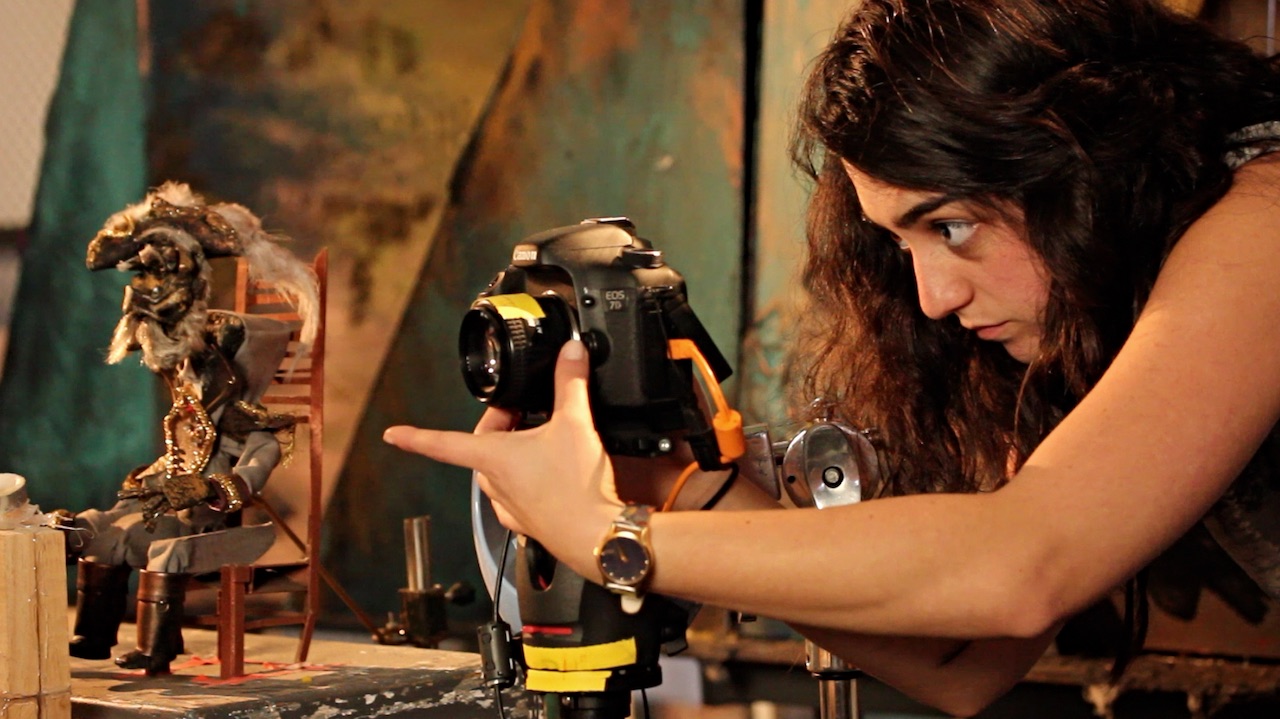
“We didn’t care about fitting the standards of the industry”
We have been fans of Screen Novelties for a long time. We wrote to their Vimeo account and they answered. Since then, a great relationship has blossomed. Mark Caballero and Seamus Walsh were kind enough to accept our proposal to come to Mexico City for a week and animate several shots of Revoltoso. They taught us a lot about animation and we have never been the same since. The scene where the axolotls play music is a homage to their short Graveyard Jamboree with Mysterious Mose.
The project kept evolving all the time. Since we didn’t have any commercial expectations, we didn’t care about fitting it into the length (or narrative) standards of the industry. We have sometimes wondered if it wouldn’t have been better to make it a feature film, because with six more months of work we would have accomplished it. With all the knowledge we gathered, we can now produce a feature film in two years.
We have a very author-driven point of view and love when we see animated films or series where this seems to be the case. [When we founded Cinema Fantasma, o]ur goal was to combine all the things we love, such as animation and films with an interesting use of cinematography. There are more interesting Mexican animation studios emerging, and we are excited about the projects they are developing. This artform is rapidly evolving in our country.

